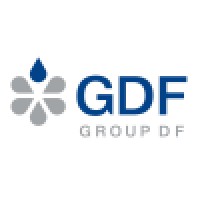
Group DF Company Cyber Security Posture
http://groupdf.comGroup DF is a diversified international group of companies operating in 11 countries across Europe and Asia. Our core areas of operations are fertilizer and titanium businesses, gas distribution and banking. Other businesses of the Group currently include agribusiness, media business, soda ash production, energy infrastructure development and real estate. Group DF actively develops its investment portfolio and expands into new business segments. Currently, we are one of the leading chemicals and energy sectors investors in Eastern Europe. Founded in 2007 by Dmitry Firtash, a prominent Ukrainian investor and businessman, Group DF is one of the largest investors and employers in Ukraine, the core country of our operations. We develop our business in a sustainable way by contributing to preservation of ecosystems, capacity building and improving the well-being of our communities. Group DF International is the Corporate Centre of Group DF which determines the general direction and strategy of the Group and its businesses, as well as preparing and justifying major strategic and investment decisions for the Group. Group DF attracts qualified, proactive and loyal employees to the Group’s corporate and industrial operations in Ukraine and other countries.
Group DF Company Details
group-df
10,001+ employees
0
523
Investment Management
http://groupdf.com
Scan still pending
GRO_1517548
In-progress
Between 900 and 1000
This score is AI-generated and less favored by cyber insurers, who prefer the TPRM score.
 Group DF Global Score
Group DF Global Score.png)

Group DF Company Scoring based on AI Models
| Model Name | Date | Description | Current Score Difference | Score |
|---|---|---|---|---|
| AVERAGE-Industry | 03-12-2025 | This score represents the average cybersecurity rating of companies already scanned within the same industry. It provides a benchmark to compare an individual company's security posture against its industry peers. | N/A | Between 900 and 1000 |
Group DF Company Cyber Security News & History
| Entity | Type | Severity | Impact | Seen | Url ID | Details | View |
|---|
Group DF Company Subsidiaries

Group DF is a diversified international group of companies operating in 11 countries across Europe and Asia. Our core areas of operations are fertilizer and titanium businesses, gas distribution and banking. Other businesses of the Group currently include agribusiness, media business, soda ash production, energy infrastructure development and real estate. Group DF actively develops its investment portfolio and expands into new business segments. Currently, we are one of the leading chemicals and energy sectors investors in Eastern Europe. Founded in 2007 by Dmitry Firtash, a prominent Ukrainian investor and businessman, Group DF is one of the largest investors and employers in Ukraine, the core country of our operations. We develop our business in a sustainable way by contributing to preservation of ecosystems, capacity building and improving the well-being of our communities. Group DF International is the Corporate Centre of Group DF which determines the general direction and strategy of the Group and its businesses, as well as preparing and justifying major strategic and investment decisions for the Group. Group DF attracts qualified, proactive and loyal employees to the Group’s corporate and industrial operations in Ukraine and other countries.
Access Data Using Our API

Get company history
.png)
Group DF Cyber Security News
Cyber Predictions For 2025 (and Beyond): Group-IB’s Expert Take On What’s Coming
Don't fall weak in the face of change and disruption. Review the upcoming cybersecurity changes and become equipped while there's time!
(PDF) Cybersecurity Standardisation for SMEs: The Stakeholders' Perspectives and a Research Agenda
This paper presents high-level SME requirements regarding cybersecurity maturity assessment and standardization and translates them into an ...
Windows CLFS Zero-Day Vulnerability Actively Exploited by Ransomware Group
The vulnerability, located in the CLFS kernel driver, allows attackers with standard user privileges to escalate their access to system-level ...
Inside the Dragon: DragonForce Ransomware Group
DragonForce is a Ransomware-as-a-Service (RaaS) affiliate program that now uses 2 versions of ransomware to target its victims. Many DragonForce ...
(PDF) Cybersecurity Threats, Countermeasures and Mitigation Techniques on the IoT: Future Research Directions
In this paper, we reviewed and identified the most common threats in the IoT environment, and we classified these threats based on three layers of IoT ...
50 Top Cybersecurity Companies to Know 2025
These companies block online threats, assess industry vulnerabilities and increase education and awareness about cybersecurity.
Cybersecurity Resource Center
This Resource Center is designed to help explain how to comply with the Cybersecurity Regulation. Among other things, it provides links to industry guidance.
Lockbit, blackcat, and stealer malware among top threats in Vietnam Q3 2024
Cybersecurity experts have identified five major malware groups active in Vietnam during Q3 2024, posing significant risks to data security ...
Turning a Cybersecurity Strategy into Reality
In this publication, BCG looks at how you can develop and implement a cybersecurity performance management framework to help you tackle ...

Group DF Similar Companies

Grupo Visabeira
O Grupo Visabeira é uma holding multinacional e multidisciplinar que surgiu em Viseu em 1980, onde mantém a sua sede. Presente em 18 países, comercializa produtos e serviços em 134 nações nos 5 continentes. O Grupo está dividido em sub-holdings: Visabeira Global (Telecomunicações, Energia,
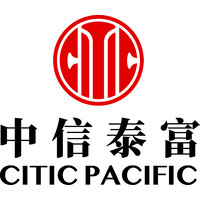
CITIC Pacific Limited
CITIC Pacific is headquartered in Hong Kong with diverse operations in special steel, energy, real estate, healthcare and consumer products distribution. The company is a wholly owned subsidiary of CITIC Limited (267.HK), a Hong Kong listed company and one of the largest conglomerates in China. Bui
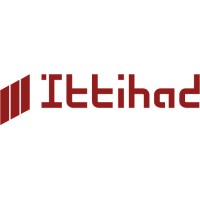
Ittihad International Investment LLC
Ittihad International Investment LLC (“The Company”) is a conglomerate that develops and manages a diversified, non-oil and gas investment portfolio in the Middle East and Egypt and has steadily grown to become a market leader in each of its verticals: o Industrials -Consumer Goods -Infrast
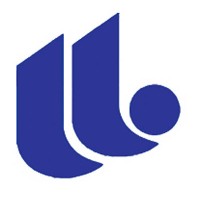
Ghadir Investment Company
Ghadir Investment Company has been established in 1992-93 as a public joint stock company (Initially named “Bank Saderat Investment Co. – Private Joint Stock). It commenced its operations in a wide variety of business fields and by managing over 120 subsidiary companies. Later in 1996, this company
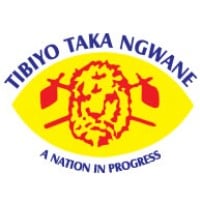
Tibiyo Taka Ngwane
Tibiyo Taka Ngwane invests in businesses that support the social, cultural and economic development of the Emaswati (the people of Eswatini). Through its diverse business portfolio - covering agriculture, agro-processing, manufacturing, services, tourism and hospitality, mining, property and media -
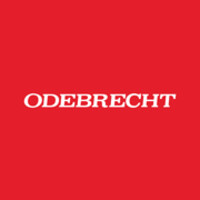
Odebrecht
Founded in 1944, Odebrecht is a Brazilian group with diverse businesses and world-class standards of quality. Its Members, guided by the Group’s own philosophy, the Odebrecht Entrepreneurial Technology (TEO), provide services and manufacture products for clients on five continents. As part of their

Frequently Asked Questions (FAQ) on Cybersecurity Incidents
Group DF CyberSecurity History Information
Total Incidents: According to Rankiteo, Group DF has faced 0 incidents in the past.
Incident Types: As of the current reporting period, Group DF has not encountered any cybersecurity incidents.
Total Financial Loss: The total financial loss from these incidents is estimated to be {total_financial_loss}.
Cybersecurity Posture: The company's overall cybersecurity posture is described as Group DF is a diversified international group of companies operating in 11 countries across Europe and Asia. Our core areas of operations are fertilizer and titanium businesses, gas distribution and banking. Other businesses of the Group currently include agribusiness, media business, soda ash production, energy infrastructure development and real estate. Group DF actively develops its investment portfolio and expands into new business segments. Currently, we are one of the leading chemicals and energy sectors investors in Eastern Europe. Founded in 2007 by Dmitry Firtash, a prominent Ukrainian investor and businessman, Group DF is one of the largest investors and employers in Ukraine, the core country of our operations. We develop our business in a sustainable way by contributing to preservation of ecosystems, capacity building and improving the well-being of our communities. Group DF International is the Corporate Centre of Group DF which determines the general direction and strategy of the Group and its businesses, as well as preparing and justifying major strategic and investment decisions for the Group. Group DF attracts qualified, proactive and loyal employees to the Group’s corporate and industrial operations in Ukraine and other countries..
Detection and Response: The company detects and responds to cybersecurity incidents through {description_of_detection_and_response_process}.
Incident Details
Incident 1: Ransomware Attack
Title: {Incident_Title}
Description: {Brief_description_of_the_incident}
Date Detected: {Detection_Date}
Date Publicly Disclosed: {Disclosure_Date}
Date Resolved: {Resolution_Date}
Type: {Type_of_Attack}
Attack Vector: {Attack_Vector}
Vulnerability Exploited: {Vulnerability}
Threat Actor: {Threat_Actor}
Motivation: {Motivation}
Incident 2: Data Breach
Title: {Incident_Title}
Description: {Brief_description_of_the_incident}
Date Detected: {Detection_Date}
Date Publicly Disclosed: {Disclosure_Date}
Date Resolved: {Resolution_Date}
Type: {Type_of_Attack}
Attack Vector: {Attack_Vector}
Vulnerability Exploited: {Vulnerability}
Threat Actor: {Threat_Actor}
Motivation: {Motivation}
Common Attack Types: As of now, the company has not encountered any reported incidents involving common cyberattacks.
Identification of Attack Vectors: The company identifies the attack vectors used in incidents through {description_of_identification_process}.
Impact of the Incidents
Incident 1: Ransomware Attack
Financial Loss: {Financial_Loss}
Data Compromised: {Data_Compromised}
Systems Affected: {Systems_Affected}
Downtime: {Downtime}
Operational Impact: {Operational_Impact}
Conversion Rate Impact: {Conversion_Rate_Impact}
Revenue Loss: {Revenue_Loss}
Customer Complaints: {Customer_Complaints}
Brand Reputation Impact: {Brand_Reputation_Impact}
Legal Liabilities: {Legal_Liabilities}
Identity Theft Risk: {Identity_Theft_Risk}
Payment Information Risk: {Payment_Information_Risk}
Incident 2: Data Breach
Financial Loss: {Financial_Loss}
Data Compromised: {Data_Compromised}
Systems Affected: {Systems_Affected}
Downtime: {Downtime}
Operational Impact: {Operational_Impact}
Conversion Rate Impact: {Conversion_Rate_Impact}
Revenue Loss: {Revenue_Loss}
Customer Complaints: {Customer_Complaints}
Brand Reputation Impact: {Brand_Reputation_Impact}
Legal Liabilities: {Legal_Liabilities}
Identity Theft Risk: {Identity_Theft_Risk}
Payment Information Risk: {Payment_Information_Risk}
Average Financial Loss: The average financial loss per incident is {average_financial_loss}.
Commonly Compromised Data Types: The types of data most commonly compromised in incidents are {list_of_commonly_compromised_data_types}.
Incident 1: Ransomware Attack
Entity Name: {Entity_Name}
Entity Type: {Entity_Type}
Industry: {Industry}
Location: {Location}
Size: {Size}
Customers Affected: {Customers_Affected}
Incident 2: Data Breach
Entity Name: {Entity_Name}
Entity Type: {Entity_Type}
Industry: {Industry}
Location: {Location}
Size: {Size}
Customers Affected: {Customers_Affected}
Response to the Incidents
Incident 1: Ransomware Attack
Incident Response Plan Activated: {Yes/No}
Third Party Assistance: {Yes/No}
Law Enforcement Notified: {Yes/No}
Containment Measures: {Containment_Measures}
Remediation Measures: {Remediation_Measures}
Recovery Measures: {Recovery_Measures}
Communication Strategy: {Communication_Strategy}
Adaptive Behavioral WAF: {Adaptive_Behavioral_WAF}
On-Demand Scrubbing Services: {On_Demand_Scrubbing_Services}
Network Segmentation: {Network_Segmentation}
Enhanced Monitoring: {Enhanced_Monitoring}
Incident 2: Data Breach
Incident Response Plan Activated: {Yes/No}
Third Party Assistance: {Yes/No}
Law Enforcement Notified: {Yes/No}
Containment Measures: {Containment_Measures}
Remediation Measures: {Remediation_Measures}
Recovery Measures: {Recovery_Measures}
Communication Strategy: {Communication_Strategy}
Adaptive Behavioral WAF: {Adaptive_Behavioral_WAF}
On-Demand Scrubbing Services: {On_Demand_Scrubbing_Services}
Network Segmentation: {Network_Segmentation}
Enhanced Monitoring: {Enhanced_Monitoring}
Incident Response Plan: The company's incident response plan is described as {description_of_incident_response_plan}.
Third-Party Assistance: The company involves third-party assistance in incident response through {description_of_third_party_involvement}.
Data Breach Information
Incident 2: Data Breach
Type of Data Compromised: {Type_of_Data}
Number of Records Exposed: {Number_of_Records}
Sensitivity of Data: {Sensitivity_of_Data}
Data Exfiltration: {Yes/No}
Data Encryption: {Yes/No}
File Types Exposed: {File_Types}
Personally Identifiable Information: {Yes/No}
Prevention of Data Exfiltration: The company takes the following measures to prevent data exfiltration: {description_of_prevention_measures}.
Handling of PII Incidents: The company handles incidents involving personally identifiable information (PII) through {description_of_handling_process}.
Ransomware Information
Incident 1: Ransomware Attack
Ransom Demanded: {Ransom_Amount}
Ransom Paid: {Ransom_Paid}
Ransomware Strain: {Ransomware_Strain}
Data Encryption: {Yes/No}
Data Exfiltration: {Yes/No}
Ransom Payment Policy: The company's policy on paying ransoms in ransomware incidents is described as {description_of_ransom_payment_policy}.
Data Recovery from Ransomware: The company recovers data encrypted by ransomware through {description_of_data_recovery_process}.
Regulatory Compliance
Incident 1: Ransomware Attack
Regulations Violated: {Regulations_Violated}
Fines Imposed: {Fines_Imposed}
Legal Actions: {Legal_Actions}
Regulatory Notifications: {Regulatory_Notifications}
Incident 2: Data Breach
Regulations Violated: {Regulations_Violated}
Fines Imposed: {Fines_Imposed}
Legal Actions: {Legal_Actions}
Regulatory Notifications: {Regulatory_Notifications}
Regulatory Frameworks: The company complies with the following regulatory frameworks regarding cybersecurity: {list_of_regulatory_frameworks}.
Ensuring Regulatory Compliance: The company ensures compliance with regulatory requirements through {description_of_compliance_measures}.
Lessons Learned and Recommendations
Incident 1: Ransomware Attack
Lessons Learned: {Lessons_Learned}
Incident 2: Data Breach
Lessons Learned: {Lessons_Learned}
Incident 1: Ransomware Attack
Recommendations: {Recommendations}
Incident 2: Data Breach
Recommendations: {Recommendations}
Key Lessons Learned: The key lessons learned from past incidents are {list_of_key_lessons_learned}.
Implemented Recommendations: The company has implemented the following recommendations to improve cybersecurity: {list_of_implemented_recommendations}.
References
Additional Resources: Stakeholders can find additional resources on cybersecurity best practices at {list_of_additional_resources}.
Investigation Status
Incident 1: Ransomware Attack
Investigation Status: {Investigation_Status}
Incident 2: Data Breach
Investigation Status: {Investigation_Status}
Communication of Investigation Status: The company communicates the status of incident investigations to stakeholders through {description_of_communication_process}.
Stakeholder and Customer Advisories
Incident 1: Ransomware Attack
Stakeholder Advisories: {Stakeholder_Advisories}
Customer Advisories: {Customer_Advisories}
Incident 2: Data Breach
Stakeholder Advisories: {Stakeholder_Advisories}
Customer Advisories: {Customer_Advisories}
Advisories Provided: The company provides the following advisories to stakeholders and customers following an incident: {description_of_advisories_provided}.
Initial Access Broker
Incident 1: Ransomware Attack
Entry Point: {Entry_Point}
Reconnaissance Period: {Reconnaissance_Period}
Backdoors Established: {Backdoors_Established}
High Value Targets: {High_Value_Targets}
Data Sold on Dark Web: {Yes/No}
Incident 2: Data Breach
Entry Point: {Entry_Point}
Reconnaissance Period: {Reconnaissance_Period}
Backdoors Established: {Backdoors_Established}
High Value Targets: {High_Value_Targets}
Data Sold on Dark Web: {Yes/No}
Monitoring and Mitigation of Initial Access Brokers: The company monitors and mitigates the activities of initial access brokers through {description_of_monitoring_and_mitigation_measures}.
Post-Incident Analysis
Incident 1: Ransomware Attack
Root Causes: {Root_Causes}
Corrective Actions: {Corrective_Actions}
Incident 2: Data Breach
Root Causes: {Root_Causes}
Corrective Actions: {Corrective_Actions}
Post-Incident Analysis Process: The company's process for conducting post-incident analysis is described as {description_of_post_incident_analysis_process}.
Corrective Actions Taken: The company has taken the following corrective actions based on post-incident analysis: {list_of_corrective_actions_taken}.
Additional Questions
General Information
Ransom Payment History: The company has {paid/not_paid} ransoms in the past.
Last Ransom Demanded: The amount of the last ransom demanded was {last_ransom_amount}.
Last Attacking Group: The attacking group in the last incident was {last_attacking_group}.
Incident Details
Most Recent Incident Detected: The most recent incident detected was on {most_recent_incident_detected_date}.
Most Recent Incident Publicly Disclosed: The most recent incident publicly disclosed was on {most_recent_incident_publicly_disclosed_date}.
Most Recent Incident Resolved: The most recent incident resolved was on {most_recent_incident_resolved_date}.
Impact of the Incidents
Highest Financial Loss: The highest financial loss from an incident was {highest_financial_loss}.
Most Significant Data Compromised: The most significant data compromised in an incident was {most_significant_data_compromised}.
Most Significant System Affected: The most significant system affected in an incident was {most_significant_system_affected}.
Response to the Incidents
Third-Party Assistance in Most Recent Incident: The third-party assistance involved in the most recent incident was {third_party_assistance_in_most_recent_incident}.
Containment Measures in Most Recent Incident: The containment measures taken in the most recent incident were {containment_measures_in_most_recent_incident}.
Data Breach Information
Most Sensitive Data Compromised: The most sensitive data compromised in a breach was {most_sensitive_data_compromised}.
Number of Records Exposed: The number of records exposed in the most significant breach was {number_of_records_exposed}.
Ransomware Information
Highest Ransom Demanded: The highest ransom demanded in a ransomware incident was {highest_ransom_demanded}.
Highest Ransom Paid: The highest ransom paid in a ransomware incident was {highest_ransom_paid}.
Regulatory Compliance
Highest Fine Imposed: The highest fine imposed for a regulatory violation was {highest_fine_imposed}.
Most Significant Legal Action: The most significant legal action taken for a regulatory violation was {most_significant_legal_action}.
Lessons Learned and Recommendations
Most Significant Lesson Learned: The most significant lesson learned from past incidents was {most_significant_lesson_learned}.
Most Significant Recommendation Implemented: The most significant recommendation implemented to improve cybersecurity was {most_significant_recommendation_implemented}.
References
Most Recent Source: The most recent source of information about an incident is {most_recent_source}.
Most Recent URL for Additional Resources: The most recent URL for additional resources on cybersecurity best practices is {most_recent_url}.
Investigation Status
Current Status of Most Recent Investigation: The current status of the most recent investigation is {current_status_of_most_recent_investigation}.
Stakeholder and Customer Advisories
Most Recent Stakeholder Advisory: The most recent stakeholder advisory issued was {most_recent_stakeholder_advisory}.
Most Recent Customer Advisory: The most recent customer advisory issued was {most_recent_customer_advisory}.
Initial Access Broker
Most Recent Entry Point: The most recent entry point used by an initial access broker was {most_recent_entry_point}.
Most Recent Reconnaissance Period: The most recent reconnaissance period for an incident was {most_recent_reconnaissance_period}.
Post-Incident Analysis
Most Significant Root Cause: The most significant root cause identified in post-incident analysis was {most_significant_root_cause}.
Most Significant Corrective Action: The most significant corrective action taken based on post-incident analysis was {most_significant_corrective_action}.
What Do We Measure?
















Every week, Rankiteo analyzes billions of signals to give organizations a sharper, faster view of emerging risks. With deeper, more actionable intelligence at their fingertips, security teams can outpace threat actors, respond instantly to Zero-Day attacks, and dramatically shrink their risk exposure window.
These are some of the factors we use to calculate the overall score:
Identify exposed access points, detect misconfigured SSL certificates, and uncover vulnerabilities across the network infrastructure.
Gain visibility into the software components used within an organization to detect vulnerabilities, manage risk, and ensure supply chain security.
Monitor and manage all IT assets and their configurations to ensure accurate, real-time visibility across the company's technology environment.
Leverage real-time insights on active threats, malware campaigns, and emerging vulnerabilities to proactively defend against evolving cyberattacks.




